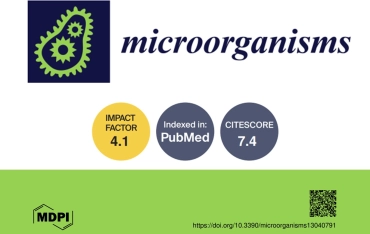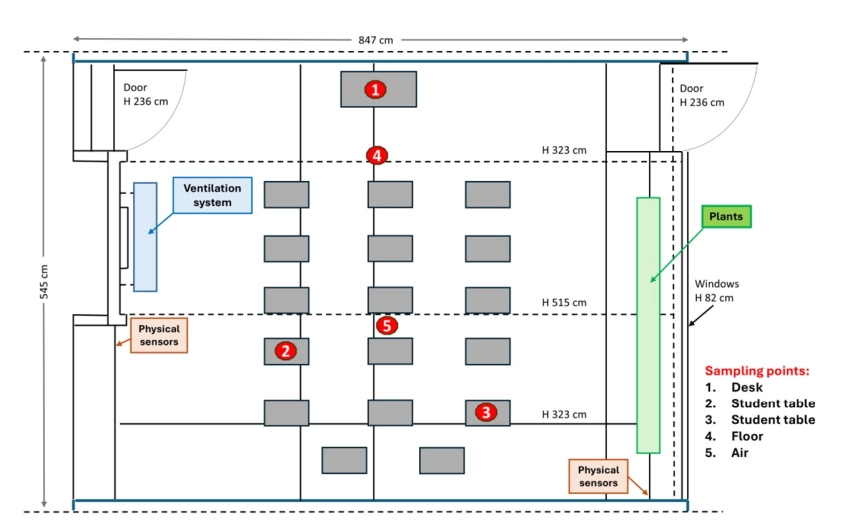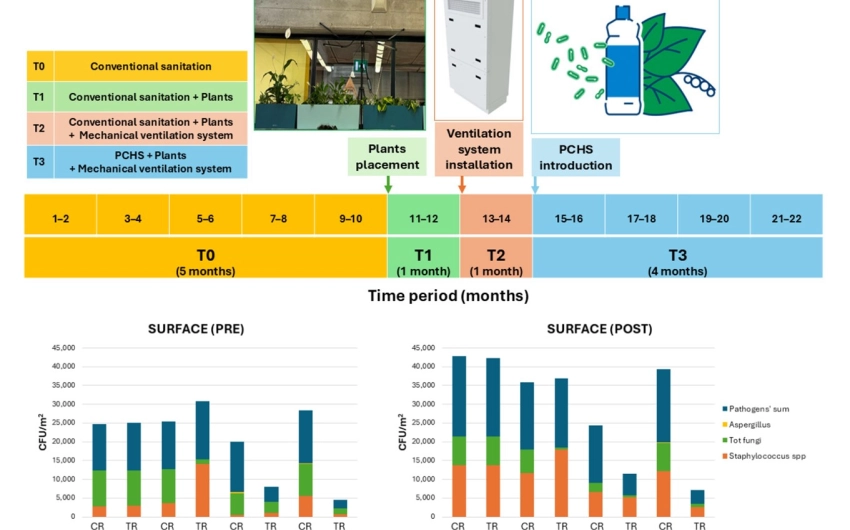
Symbien: article on Microorganism
A Sustainable Combined Approach to Control the Microbial Bioburden in the School Environment
The indoor microbiome is a dynamic ecosystem including pathogens that can impact human health. In this regard, the school environment represents the main living space of humans for many years, and an unhealthy environment can significantly condition students’ health. School rooms can suffer from insufficient ventilation and the use of building materials that may favor pathogen contamination, mostly sanitized by conventional chemical-based methods, which can impact pollution, have temporary effects, and induce the selection of antimicrobial resistance (AMR) in persistent microbes.
Go to the article
Introduction
Educational institutions, such as schools, serve as primary living environments during the educational phases of human life, as students typically spend one-third of their day there. Characterizing the microbiome in these environments is crucial to understanding how it can affect students’ health, wellbeing, and daily performance. Indoor school microbiomes can be shaped by several factors, including occupants’ features (gender, age groups) and activity, ventilation modalities, building materials, air pollutants, and environmental hygiene practices .
There is evidence that indoor air quality (IAQ) and ventilation in school buildings play a crucial role in spreading bacterial and fungal aerosol contamination, leading to an increased risk of developing sick building syndrome (SBS), characterized by mucous membranes and skin irritation, mental fatigue, nausea, and respiratory issues, including asthma and rhinitis.
In European schools, naturally ventilated old buildings often display inadequate ventilation, and insufficient airflow can lead to poor air quality, elevated CO2 levels, and worsened health issues associated with exposure to indoor pathogen microbes.

Conclusions
Despite the study limitations (monocentric, limited time period, lack of NGS analysis), the collected results show that a combined strategy aimed at improving the indoor microbiome could be effective in controlling pathogen contamination, AMR diffusion, and environmental parameters (CO2, temperature, humidity) in the school areas. The sustainable interventions adopted in the test classroom included the addition of plants, mechanical
ventilation, and probiotic cleaning, and overall evidenced a significant modification in the indoor surface and air microbiome, which may provide a healthier environment for students and staff. Overall, the data suggest that the use of a holistic approach taking into consideration all the parameters affecting the quality of indoor spaces could sustainably and effectively reduce the infectious risk for human occupants and the spread of AMR, meanwhile preserving the health of the outdoor environment, in line with the One Health principles.

